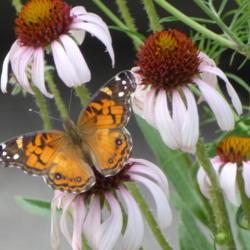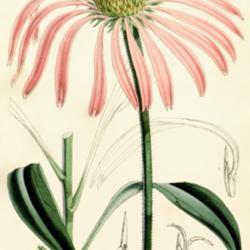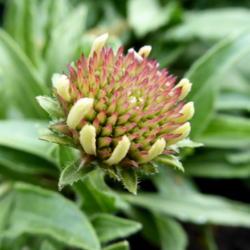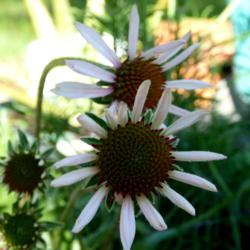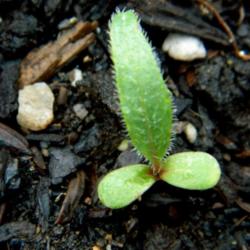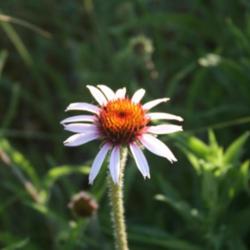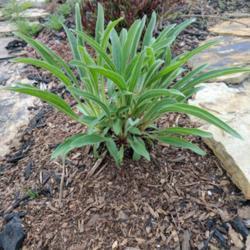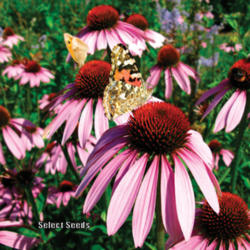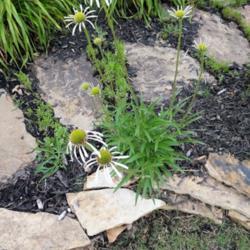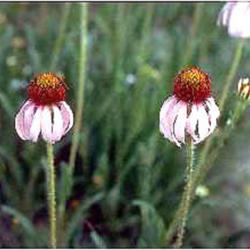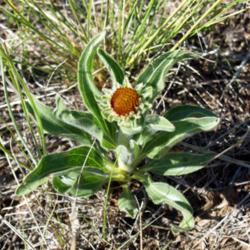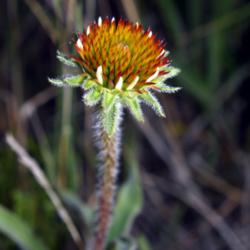General Plant Information (Edit)
| Plant Habit: |
Herb/Forb
|
| Life cycle: |
Perennial
|
| Sun Requirements: |
Full Sun to Partial Shade
|
| Water Preferences: |
Mesic
Dry Mesic
Dry
|
| Plant Height: |
18 inches |
| Plant Spread: |
12 inches |
| Flowers: |
Showy
Fragrant
|
| Flower Color: |
Pink
|
| Flower Time: |
Summer
Late summer or early fall
|
| Uses: |
Cut Flower
|
| Wildlife Attractant: |
Bees
Butterflies
|
| Resistances: |
Deer Resistant
|
| Propagation: Other methods: |
Division
|
| Pollinators: |
Various insects
|
| Containers: |
Suitable in 3 gallon or larger
|
- Narrow-leaf Coneflower
- Black Sampson
- Black Samson echinacea
- Western Coneflower
- Narrow Leaf Coneflower
- Black Samson
- Kansas Snakeroot
- Echinacea
- Coneflower
Posted by
Trish (Grapevine, TX - Zone 8a) on May 10, 2022 9:12 AM concerning plant:
also called narrow-leaved purple coneflower. Native to the Great Plains from the United States-Canada border west to Montana and Wyoming and south to Texas, this species grows only 10 to 24 inches tall (other species reach 2 to 4 feet). The light purple to rose pink flowers are 2 1/2 to 3 inches in diameter. Its leaves are narrow, and the stems are hairy.
Propagate by seeds sown in fall in a moist, sandy soil mix. Allow to overwinter in a cold frame. According to Neil Diboll of Prairie Nursery, this "moist stratification" procedure yields a significantly higher germination rate (about 90 percent) than seeding in a cold frame in early spring. If you cannot sow seeds in the fall, provide an artificial moist stratification: Mix seed in a 3-to-1 ratio with damp (not dripping wet) peat moss. Place the mixture in an airtight and watertight bag or jar marked with the date and plant name, and place it in the refrigerator at 34° to 38°F for 30 to 60 days.
Root division is possible. However, this species has a taproot, and unless the lower half of the root has buds, the process is less reliable for propagation compared with E. purpurea.
Researchers consider the roots of this species to have the best medicinal properties of all the coneflowers. But the plant's virtue may be its downfall: Collection of wild plants has increased to a degree that threatens their survival.
Plant Events from our members
| MrsBinWY |
On May 16, 2020 |
Transplanted
7 in front of plum tree between ornamental grass and daffodils; on 10-5-2019: 3 between golden Chinese Trumpet Lily and 'Orange Electric' Asiatic Lily |
| MrsBinWY |
On July 21, 2019 |
Potted up
On 7-21-2019, potted up 14 seedlings. |
| MrsBinWY |
On April 28, 2019 |
Seeds germinated
15 of 16 - suggests 90 days of cold, moist stratification may not always be necessary |
| MrsBinWY |
On March 12, 2019 |
Seeds sown
WS 16 seeds (C90) from Prairie Moon in milk jug @ room temp |
» Post your own event for this plant
« Add a new plant to the database
» Search the Coneflowers Database: by characteristics or by cultivar name
« See the general plant entry for Coneflowers (Echinacea)
« The Coneflowers Database Front Page
« The Plants Database Front Page
